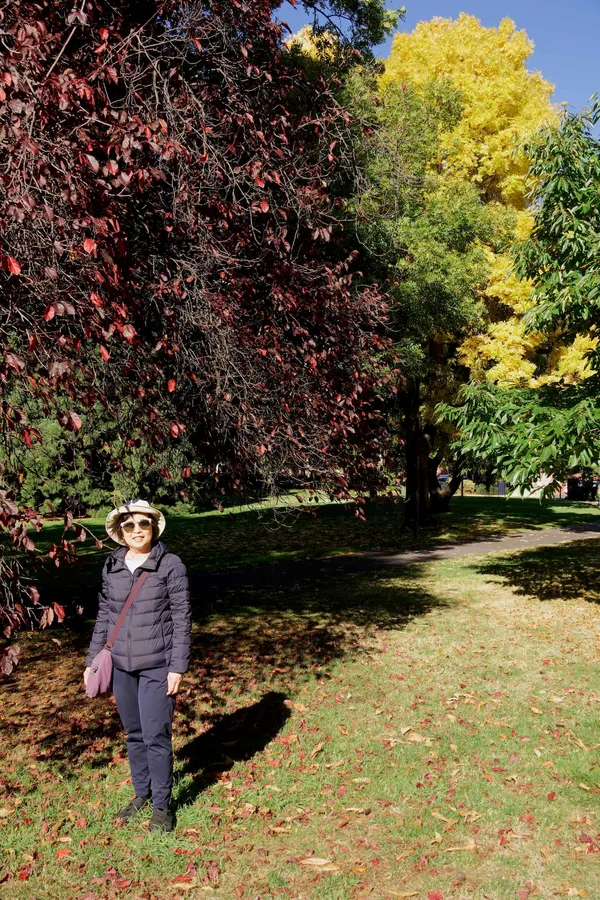.CP7UlcIN_1zjvRT.webp)
.CP7UlcIN_1zjvRT.webp)
Today, unfortunately, is the last day of our trip, we will fly back to Sydney in the afternoon. So we only have about half a day to do a last exploration of the city before we leave.
The following information is abridged from On The Convict Trail.
The first stop is St. David’s Park - one of Hobart’s premier classic parks, popular with weddings in the beautiful rotunda and public events, adjacent to the famous Salamanca Markets.
St David’s Park is a formal English style walled park and dates from the beginning of European settlement in 1804. This was the site of the first burial ground in Tasmania, marked out by Lieutenant-Governor David Collins and the Reverend Robert Knopwood in April 1804. At that time the burial ground was ‘a place of real seclusion and rare beauty’, located away from the main settlement and surrounded by an ‘exquisite natural shrubbery’. Information posted on site explains that it was called St David’s Cemetery as a mark of respect to the memory of the Colony’s founding.
St David’s was Hobart’s main cemetery and many of its most prominent citizens were buried there. As the town expanded, the land surrounding the burial ground was gradually developed and by the 1850s people were voicing concerns about the health risks associated with burying corpses in such a thickly populated neighbourhood. The Government passed the Cemeteries Act in 1865 and the opening of the Cornelian Bay cemetery in 1872 allowed St Davids and all the other burial grounds within the city to be closed.
In 1919 it was handed over to the City Council to be used as a recreation ground. A major feature of the park is the memorial wall which is made up of many of the original headstones from the park’s previous life as the Hobart colony’s first cemetery. It contains the names and details of many “First Fleeters” and many of the early settlers of Hobart Town.
Please click on any photo to view in a lightbox. Use arrow keys or swipe to navigate.
 St Davids Park (SONY ILCE-6500)
St Davids Park (SONY ILCE-6500) .CFp6jxJ5_Z1QOU9c.webp) St Davids Park (1) (SONY ILCE-6500)
St Davids Park (1) (SONY ILCE-6500) .B4D_YYuc_ZOg1An.webp) St Davids Park (2) (SONY ILCE-6500)
St Davids Park (2) (SONY ILCE-6500) .fXfXFKnS_Z2avf0c.webp) St Davids Park (3) (SONY ILCE-6500)
St Davids Park (3) (SONY ILCE-6500) .CP7UlcIN_NJw8s.webp) St Davids Park (4) (SONY ILCE-6500)
St Davids Park (4) (SONY ILCE-6500)